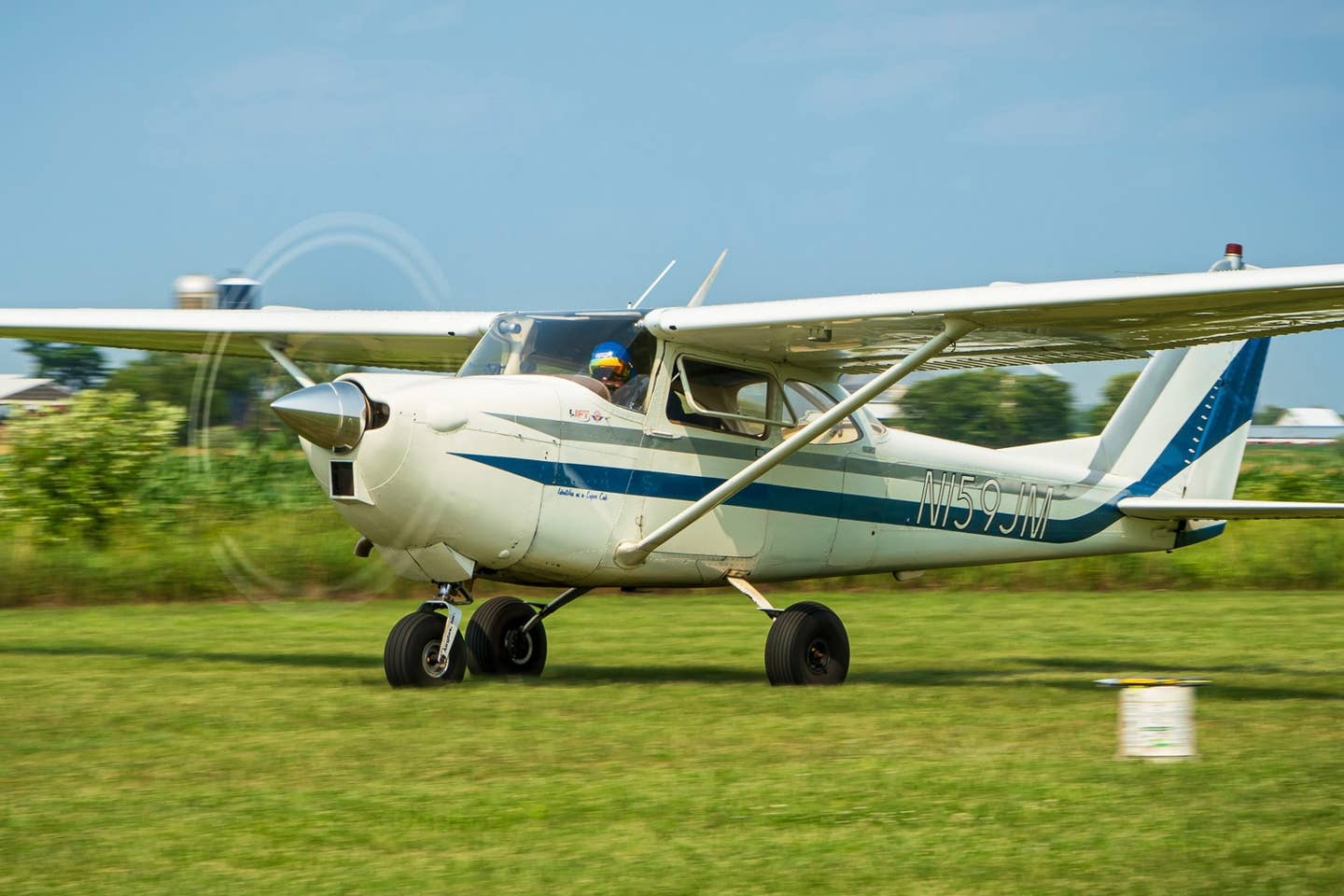Navigating the Lure of Added Power
It can make more financial sense to buy an airplane that has already had the upgrade installed rather than purchase a stock airplane and do it later.

The oval bumps on the sides of the cowling are a dead giveaway. This Cessna 172 is packing a lot more horsepower than a standard 172. [Credit: Jim Stevenson]
Back when I belonged to a flying club in Ann Arbor, Michigan, it had one plane that stood out from the rest. It was N1412V, a red-and-white 1974 Cessna 172M Skyhawk. It sported an orange-and-white vinyl interior, complete with sweet chrome trim.
Majestic as the interior was, however, it was the 180 hp engine upgrade that made it everyone’s favorite.
I never would have guessed that adding 20-30 hp to a standard 172 would have such a dramatic effect on the overall flying experience, but 12V consistently seemed to deliver performance far beyond the numbers on paper. Maintaining the best angle of climb after takeoff introduced a concerningly steep deck angle, and even with all four seats occupied, it never felt lethargic like the other 172s.
After flying that airplane around for a summer, I got checked out in the club’s Cessna 182.
Despite having 230 hp and a constant-speed prop, the performance somehow wasn’t as impressive as that of 12V. Maybe the heavier weight played a part, or maybe there’s some law of diminishing returns at play. Whatever the reason, 12V seemed to be 80 percent of a 182 with significantly lower operating costs and fuel burn. With that additional horsepower, it was what the 172 should have been from the beginning.
These days, with 145 horses hard at work under the cowl of my trusty 170B, I think about that extra performance often. Of course, the memories seem most vivid when I’m faced with trees or power lines looming ahead of me at the departure end of the runway. While my mediocre flying skills firmly remain the weakest point of the overall equation, that extra 20-30 hp would indeed be amazing to have.
Every so often, I look into what it would take to upgrade to a more powerful engine. And every time I do, I’m reminded of the stratospheric cost of the upgrade.
A friend of mine out West bit the bullet a couple of years ago, replacing his C-145 with a 195 hp Continental IO-370. He walked away with the perfect 170B—and a $90,000 hole in his bank account.
Unfortunately, with the exception of upgrading the prop for noticeably better takeoff and climb performance at the expense of some cruise speed, there aren’t many alternatives.
Of the two dozen or so certified engine upgrade STCs that exist for the 170B, several utilize undesirable and/or orphaned engines with challenging parts availability. Several others are only approved for an individual aircraft, like a field approval. Many are older STCs that appear to be abandoned entirely—likely tossed away and forgotten by surviving family members after the original STC holder passed away.
This leaves the few well-supported and correspondingly pricey STCs—namely Stoots Aviation and XPMods—as some of the only realistic options. Accordingly, the upgrade itself can easily exceed the value of the airplane.
That’s a bleak situation for those of us with modest salaries.
This reality serves as a cautionary tale for airplane shoppers, and it’s something I make sure to explain to anyone seeking buying advice. In the case of engine upgrades, it usually makes more financial sense to buy an airplane that has already had the upgrade installed rather than buy a stock airplane and do the upgrade later.
I generally urge shoppers to seek out already-modified airplanes or, alternatively, some lesser-known, more powerful models. Anecdotally, the premium of already-modified airplanes generally amounts to roughly half of the cost of the upgrade itself.
Cessna 170Bs with 180 hp, for example, are generally listed for around $30,000-50,000 above unmodified examples. That’s a relative bargain when faced with a nearly $100,000 upgrade cost, although the latter includes a zero-time engine and prop.
In the world of Cessna, there are some less-common models with larger engines that many aren’t even aware exist.
My favorite “sneaky” type is the 175 Skylark. Originally built with the less-desirable, 175-horsepower, geared Continental GO-300 and otherwise identical to a standard 172, many have been upgraded with the popular 180 hp Lycoming O-360. Few shoppers think to search the classified listings for Cessna 175s, so those who do are faced with less competition from other buyers.
Another option would be to purchase an airplane with a damaged or timed-out stock engine that would, at a minimum, require a $30,000-40,000 overhaul. This ultimately makes the upgrade to a more powerful engine more financially palatable.
If the end result is your dream airplane with a brand-new and far more powerful engine, it might be worth considering.
The takeaway for prospective owners is to anticipate how they might someday outgrow the airplanes they’re considering and make every attempt to purchase one with the big upgrades already out of the way. Or, in the words of an old farmer I once knew, “Buy once, cry once.”

Sign-up for newsletters & special offers!
Get the latest FLYING stories & special offers delivered directly to your inbox






